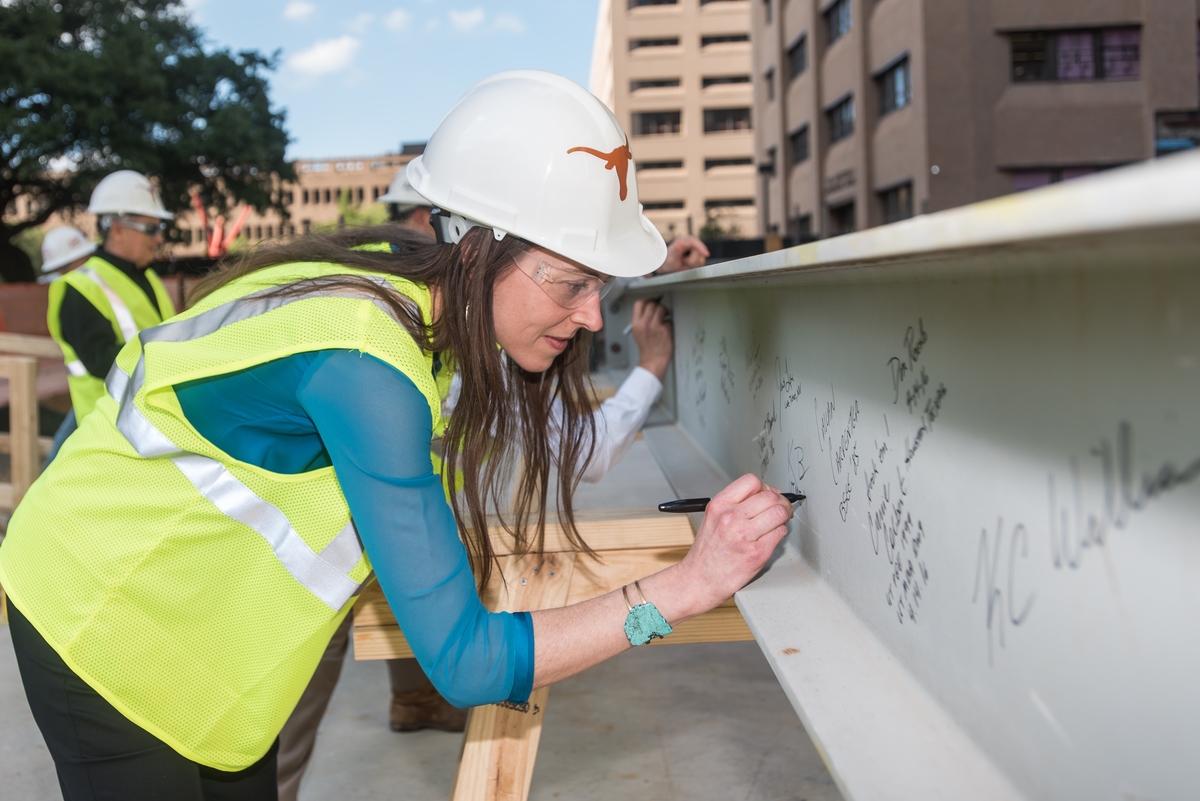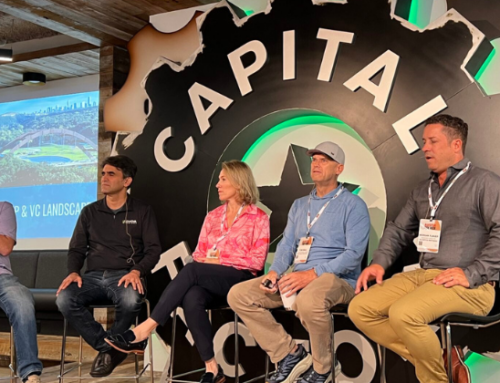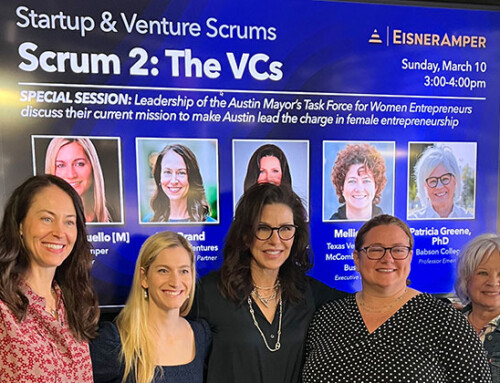A recent report revealed that 8th grade girls scored higher than boys on technology and engineering literacy tests. 45 % of girls scored proficient or better on the test, while the percentage for boys was slightly lower at 42 % scoring proficiently or better. The report challenges an existing imbalance we see in society today – where men significantly outnumber women in STEM (Science, Technology, Engineering and Math) majors and careers. It’s a conundrum similar to what we’ve discussed in past blogs: the underrepresentation of women in business leadership positions despite the financial outperformance companies who build gender diverse teams enjoy. This holds true for a wide range of enterprises from the publicly traded Fortune 500 companies to the venture-backed startups. For this blog, True Wealth Ventures examines the gender imbalance in STEM education through an interview with Tricia Berry, the director of the Women in Engineering Program (WEP) at UT Austin. WEP serves as a support network for women engineering students – a sisterhood for students in a field dominated by men. We review some of the methods programs like WEP have implemented to attract and retain more women in STEM fields because this is such an important economic issue as we have discussed in previous blogs.
According to a study conducted by the US Department of Commerce, women represent 48 % of the overall U.S. workforce, but hold less than 24 % of jobs in STEM fields. According to a McKinsey study women receive “20 %, 24 % and 23 % of engineering bachelors, masters, and doctorate degrees, respectively.” Lower participation in the pursuit of STEM degrees by women shapes hiring practices as well. The same study by McKinsey & Company, addresses the difficulties recruiters face finding qualified, female candidates for entry-level STEM jobs. McKinsey describes this as a, “pre-pipeline” problem. This pre-pipeline issue traces back to the classroom, and by “classroom” we are talking as far back as the elementary school classroom. The challenge is to better understand the factors that both contribute to this disconnect and discourage women from pursuing STEM degrees, so we can reverse what seems like the current inevitable outcome of fewer women in STEM careers.
Let’s examine an education institution close to home—The University of Texas at Austin. UT Austin ranks in the top 5% of US universities. That’s 15th out of 352 institutions for the number of undergraduate engineering degrees awarded to women based off the 2015 report by American Society for Engineering Education. My alma mater department at UT Austin, Mechanical Engineering, ranks higher compared to the national average of 14 %, with 17 % of mechanical engineering degrees awarded to women during the 2014-2015 academic year. But, the percentages still remain low – in 2015 only 22 % of undergraduate engineering degrees were awarded to women at UT Austin compared to 20% nationwide. However, a brighter statistic shows that since 1990 UT engineering women undergrad enrollment grew from 15 % to 27 %.
Interview with Tricia Berry
We were curious to ask Berry about these numbers and what’s going on behind the scenes at UT to address women in STEM. We first addressed data presented in a McKinsey study that showed graduation rates for women pursuing a degree in computer science had dropped from 40% in the 1980s to just 18% today. Berry pointed out that after the internet bubble burst the overall numbers of men and women pursuing computer science degrees dropped precipitously – and that women have not returned to the field at the same rate men have today.
“The culture and climate of gaming and that whole industry is still very male dominated. It’s a tough space for a girl to go into. It’s not that girls can’t do it; they haven’t been exposed to it in a way that’s exciting, like how with designing apps or programs you can make the world a better place.”
Tricia explained that from her experience, many of the women in her program join engineering with a purpose to change the world. She gave us an example of a high-school student she had met at Girl Day at UT Austin, who conveyed to her that she wanted to join the Cockrell Engineering School so she could conduct cancer research to help her dad who was suffering from the disease.
“What some of the research shows is, more so then boys, girls are more likely to do STEM when there is a purpose or some social impact. For example, some of the first LEGO League experiences are an example – building a robot just so it can beat up a rival robot. There doesn’t need to be any social impact, and so these aspects don’t draw in girls at the same level as they do boys. Girls in particular want to do STEM with a purpose give me a reason behind it.”
Around third and fourth grade, according to Berry, is when an interest in math and science sets in for many kids and is a critical point along the spectrum of education where the engagement of girls in STEM is key. Educators recommend introducing girls to robotics or science clubs and to resist the inclination to automatically place them in gymnastics or ballet. This shift is important to encourage girls to master these skills early. The support of parents and educators is critical to boost the confidence and participation at this vulnerable age.
Berry explained that research shows something as simple as experimenting with building blocks and LEGOs – the way many young boys do – equips young girls with skills that are necessary in degrees like engineering. Some of these basic skills are not inherent in children but can be easily learned. At UT, many students, including a large number of women and students from low socio-economic backgrounds, complete a six-week course on spatial visualization (the ability to see an object and visually rotate it) in their first year. This class can bridge the skill gap for students that did not learn these skills at a young age. These types of courses have the power to level the playing field quickly. WEP underscores the idea of a growth-mindset in their students. Berry sees that in our current culture it is common for girls exploring STEM to get discouraged and doubt their abilities in their major.
“Students in STEM degrees have to understand they weren’t born being able to do differential equations. It’s something we have to work at it to get it. You have to fail to learn, and that growth mindset is definitely something we talk about with high-school and college students.”
Women participating in WEP initiatives collaborate and network with women in their majors as well as mentors who work in their fields. This is key for women at all STEM education levels because it exposes them to role models they may not see in the media. It’s paramount in fostering enthusiasm and a can-do attitude for aspiring women and helps students develop the knowledge and tools needed to navigate in an environment where they are underrepresented.
“If you can’t envision someone else out there doing the work in those roles, how can you see it for yourself? We bring in role models, graduates in front of undergraduates, and undergrads in front of high schoolers.”
As we’ve discussed in past blogs, gender-diverse businesses deliver higher financial returns, so getting women into the STEM pipeline and keeping them there is a high priority for the U.S. and world economy. While the focus cannot end at girls’ education, it has to start there. Clearly, the commitment to increasing women’s participation in STEM must start early and be encouraged at each developmental stage in a way that is effective for girls. We are learning more and more about what resonates and works for girls – from the types of toys that can give them engaged at an early age, to the encouragement of STEM being cool and also accessible in early education, to exposing girls to more role models in the media and the workplace. Increasing this pipeline of women can ultimately drive us towards more women in leadership roles in these fields, which is where the magic really happens. True Wealth Ventures is part of this solution continuum with the creation of more role models of women innovators, entrepreneurs, and technologists bringing their ideas to life by scaling their businesses into thriving enterprises. But, as we see it, in order to address this overall challenge, we must start early at the source!
Ortiz, Erik, “Girls Beat Boys in 8th Grade Tech, Engineering Literacy Tests”, NBC News
Brand, Sara PhD, “Women-Led Businesses Outperform”, True Wealth Ventures Blog
“WEP Staff”, The University of Texas at Austin Cockrell School of Engineering
Brand, Sara PhD “Are Women The Most Underutilized Resource in The World?”, True Wealth Ventures Blog
“Women in STEM: A Gender Gap to Innovation”, US Department of Commerce
Krivkovich, Alexis, Kutcher Eric, Yee Lareina, “Breaking Down the Gender Challenge”, McKinsey & Company
Sprague, Kara, “Wanted: More Women In Technology”, McKinsey & Company
Yoder, Brian PhD, “2015 Engineering by the Numbers”, American Society for Engineering
Berry, Tricia and Dominguez, Enrique, “Recruiting Diverse Engineering Students”, Texas Engineering






